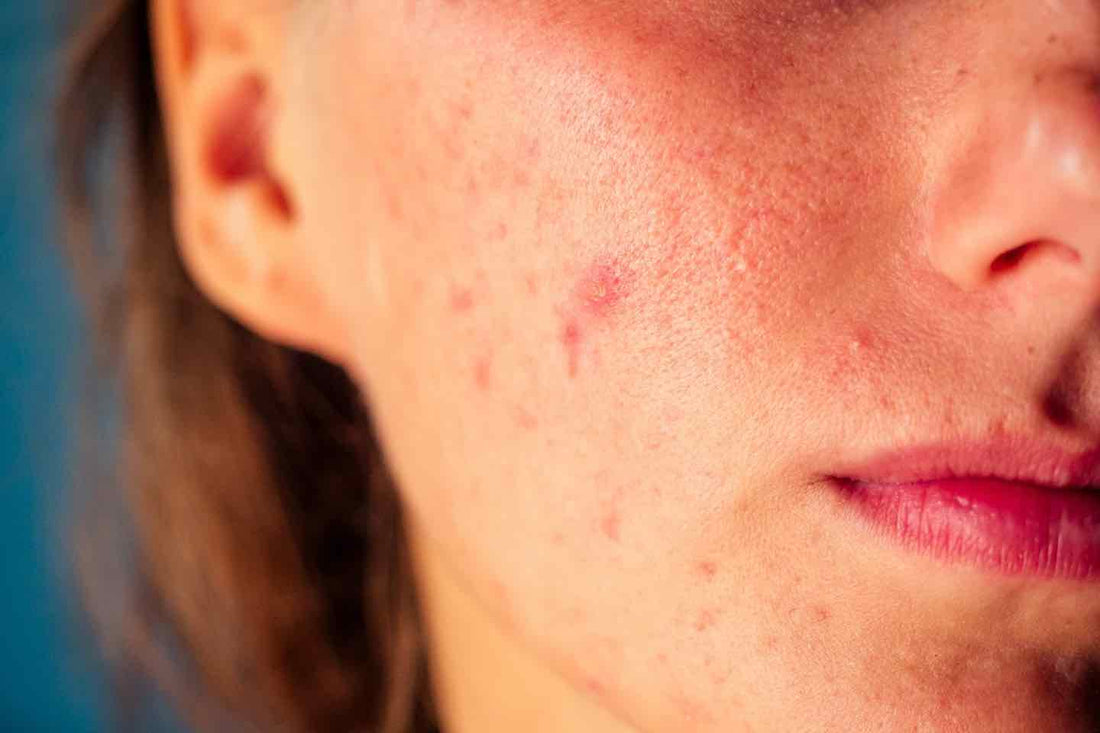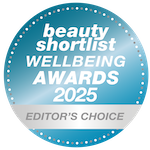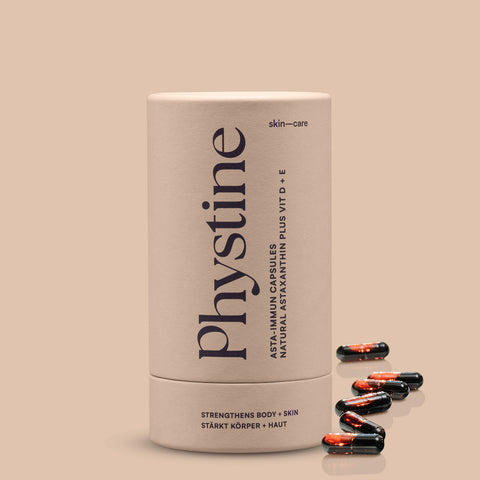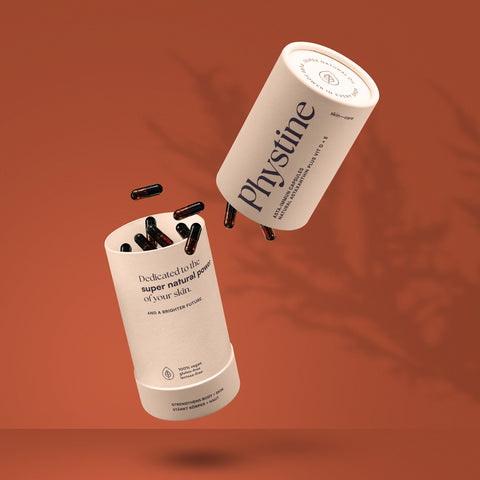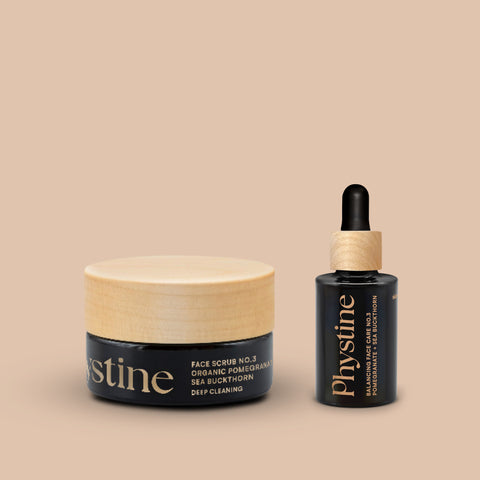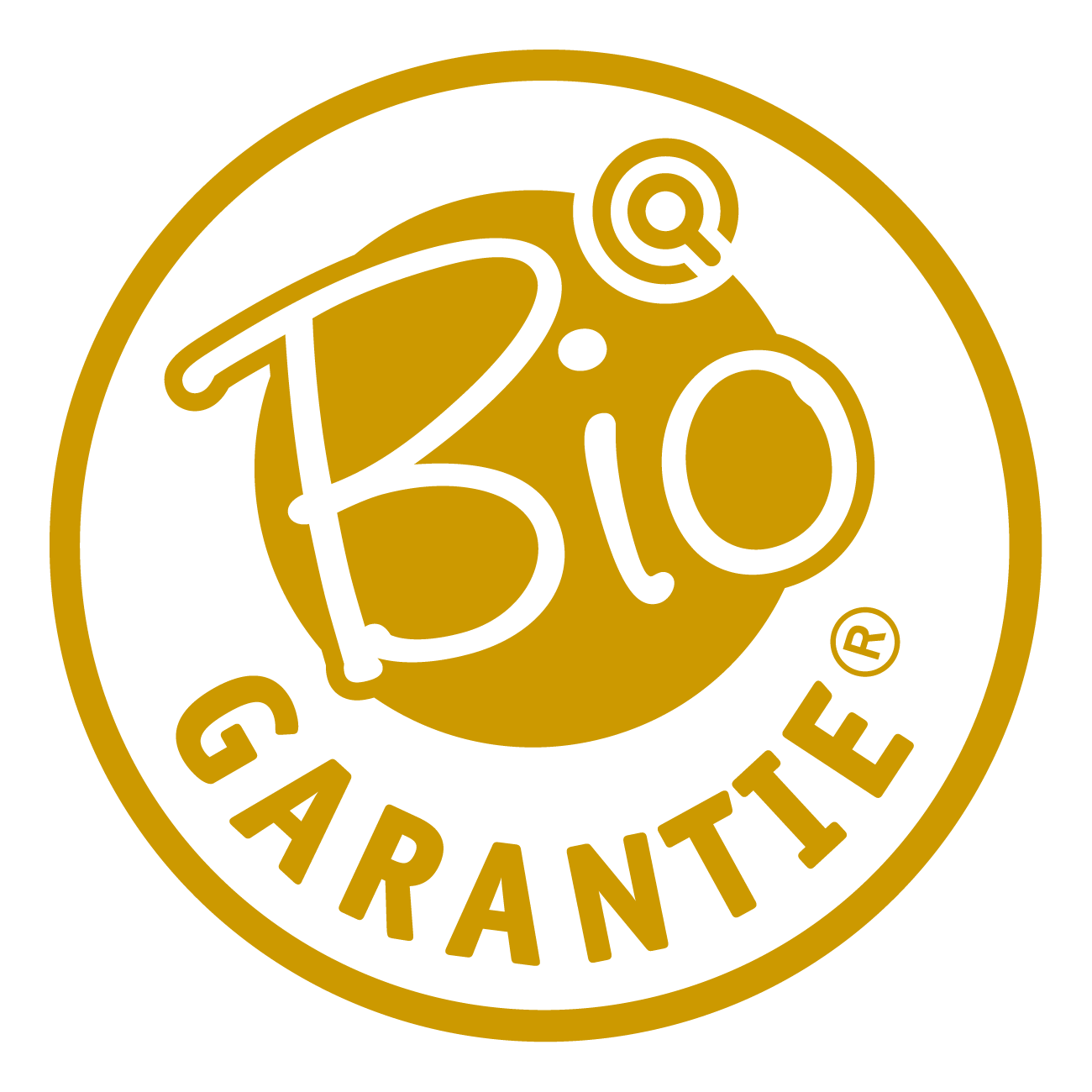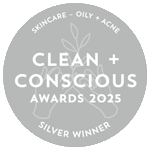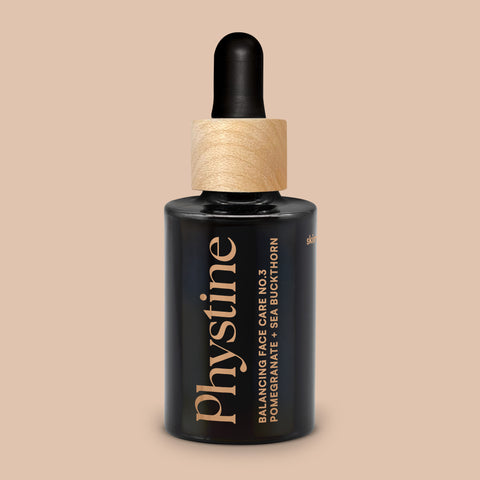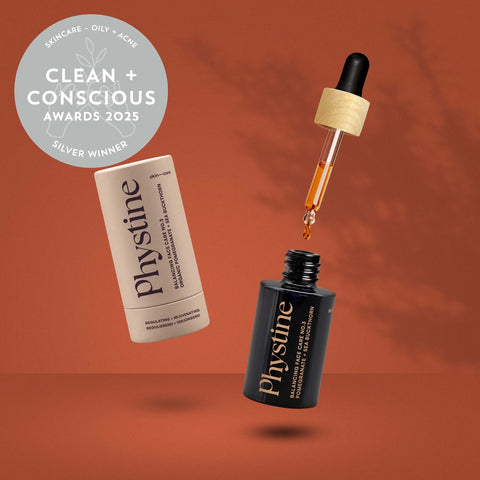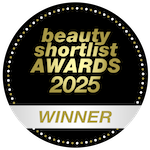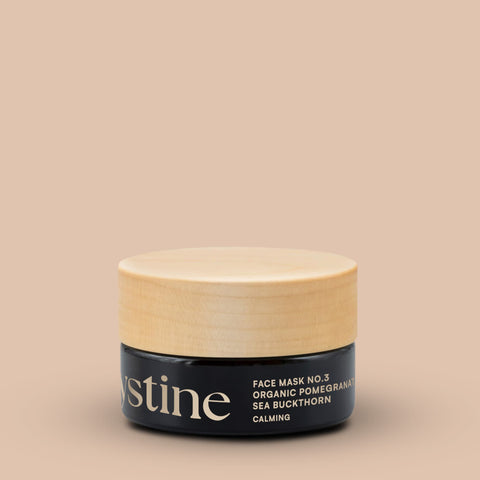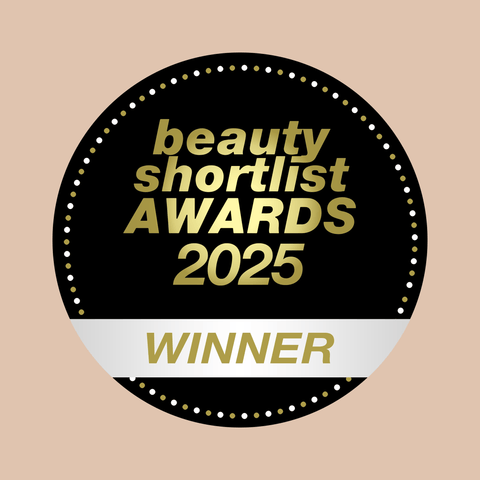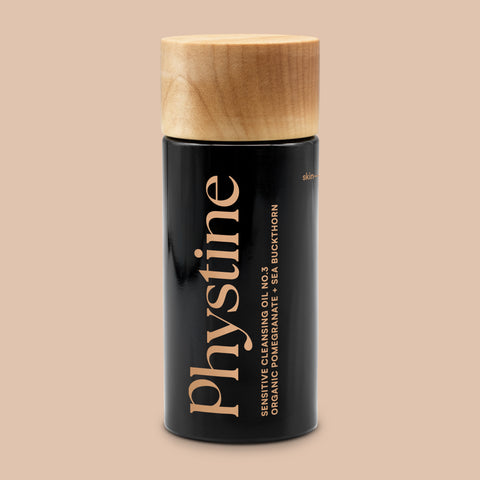Oily skin, inflamed pimples and purulent pustules: even though acne vulgaris is generally a harmless skin disease, the suffering is great when the skin is out of balance. This article reveals exactly what acne vulgaris is, how it occurs and how you can support the balance of the skin.
What is acne vulgaris? How is it created?
Acne vulgaris (Latin: vulgaris = common), often referred to as “acne” for short, is one of the most common skin diseases. More specifically, acne affects the skin's sebaceous glands and their outlets: these become clogged so that the sebum produced by the skin to maintain moisture can no longer drain away. The accumulation of sebum causes certain bacteria (e.g. Propionibacterium acnes , also known as Cutibacterium acnes ) to multiply and lead to inflammation of the sebaceous gland follicles, which are the sacs that surround the hair roots (Fig.1). The result is inflamed and painful, often swollen areas on the skin. But it's not just Propionibacterium acnes that colonizes our skin, other microorganisms are also part of our skin flora. New study data shows that the balance of skin flora also plays a major role in the development of acne.

Around 85% - 95% of pubertal and young adults are affected by acne, although the skin disease is now increasingly being observed in children under 10 years of age. The frequent occurrence of acne during puberty is due in particular to hormonal changes during this phase of life, which lead to increased sebum production and thus an ideal breeding ground for the bacteria. As acne tarda, the so-called “late acne”, the skin disease can also affect adults; it is also usually caused by hormonal changes.
How do you recognize acne vulgaris?
A common feature of acne is excessive oil production in the skin, the so-called seborrhea: the skin is shiny and often has large pores. The increased sebum production also causes typical acne lesions all over the body, but mostly on the face, chest and back. These can be either non-inflammatory, open and closed blackheads (also known as comedones) or inflammatory poplars and pustules. Open comedones are clogged follicles with openings through which the contents are released into the air. Closed comedones, recognizable by the typical “white heads”, are blocked follicles without an opening. Papules are characterized by small raised lesions on the skin, while pustules visually resemble these but are inflamed and filled with pus (Fig.2). People with severe acne may also experience nodules and cysts (inflamed, swollen lesions measuring at least 5 mm) and various types of scars.

In addition to acne vulgaris and the late form acne tarda , there are other forms of acne: acne rosacea , acne infantum and acne inversa (also hidradenitis suppurativa ). These arise from other causes, sometimes bring with them other symptoms and are also treated differently.
What triggers acne vulgaris?
An important influencing factor is hormonal fluctuations, which occur especially in adolescence, which lead to increased sebum production and can thus throw the skin out of balance. Studies have shown that severe forms of acne are more likely to affect boys than girls. But genetic factors also play a role: studies show that the likelihood of getting acne is increased in children whose parents had acne themselves when they were young - especially if both parents were affected by acne as teenagers. Diet in particular has been the subject of much research in connection with acne. It is still quite controversial what role nutrition plays. It is assumed that the consumption of carbohydrates, milk or dairy products and saturated fats (e.g. in animal products such as butter, meat, sausage or cheese, but also vegetable saturated fats such as coconut oil) play a major role in the development of acne. Other factors such as smoking, alcohol, psychological stress and sleep duration are also suspected to be involved in the development of acne or can affect the severity of the skin disease. However, there are no results from studies on this yet.
What effects does acne have on those affected?
Acne vulgaris affects those affected not only physically, for example through painful spots or the formation of scars, but also psychologically, as those affected find it uncomfortable to appear in public with acne lesions. Acne therefore usually has a profound impact on the quality of life, self-esteem and body image of those affected and increases the risk of mood swings, anxiety or even depression.

How is acne treated medically?
Acne vulgaris is usually easy to treat, but treatment usually requires a lot of time. It is often necessary to use therapies applied locally to the skin, i.e. creams or ointments (so-called topical agents) over several months, and in many cases additional systemic therapy, i.e. effective throughout the body, is necessary. According to experts, for mild forms of early-stage acne with mild inflammation and comedones, several months of treatment with topical agents containing either a retinoid (a substance similar to vitamin A) or benzoyl peroxide (has an antibacterial effect and allows the sebum to drain away more easily) is sufficient ) should contain. Although topical therapies are often effective, they often destroy the skin barrier and cause long-term side effects such as skin irritation or skin dryness. Topical and - especially in severe forms of acne - systemic antibiotics, which work against the bacteria that cause inflammation, are an essential part of acne treatment.
What can you do if you have impure skin or acne?
While hormonal or genetic influencing factors cannot be changed, factors such as diet or skin care can be influenced.
Nutrition for impure skin and acne
There is strong evidence from studies that a diet rich in omega-3 and omega-6 fatty acids can help relieve acne. This also applies to a diet containing foods with a low glycemic index, i.e. foods that do not raise blood sugar levels as much. Experts therefore recommend reducing sugar-rich and heavily processed foods such as sausage or cheese and convenience products as much as possible and instead relying on a balanced diet based on the Mediterranean diet, which is rich in antioxidant fruits, vegetables and good oils such as olive and walnut - or linseed oil.
The role of skin care in impure skin and acne
A common mistake with acne is excessive washing or using cleansing products containing soap or surfactants, as well as using peelings with aggressive or drying ingredients (e.g. salicylic acid or fruit acid). These products often further irritate the skin, damaging the skin barrier and making it easier for pro-inflammatory bacteria to penetrate the skin - a vicious cycle for acne and the associated inflammation.
In addition to cleansing, care also plays a major role: those affected by acne usually complain about excessive oil production in their skin, which is why they do not see the use of moisturizers as routinely necessary. Instead, they prefer to use drying products that can irritate the skin and cause long-term damage - the next vicious circle that promotes acne inflammation.
Can you squeeze blackheads and pimples yourself? Rather not! – Even if the skin's appearance initially appears better after squeezing, it can lead to inflammation or, in the long term, acne scars. Cleaning out impurities should always be carried out by a specially trained dermatological or cosmetic professional.
Visibly improve your skin's appearance within a short period of time with the following products:
Facial serum No.3 organic pomegranate sea buckthorn as day and night care
The unique composition of antioxidant active ingredients and non-comedogenic (non-pore-clogging) plant oils naturally reduces the skin's sebum production and supports the resolution of inflammatory processes. In addition, the skin barrier is built up in the long term and existing acne scars are minimized - visible and noticeable results after just a few days to weeks.
Facial peeling No.3 organic pomegranate sea buckthorn with noticeable immediate effect
The moisturizing properties of red algae (dulse), the antioxidants of Kalahari melon oil and the intensively cleansing rosehip powder enable an immediately noticeable, velvety-soft skin feeling - after the first application. For acne-prone skin, the peeling can also be used every 1-2 days in the evening and, in combination with facial serum No.3, gradually refines the skin's appearance.
Cleansing oil No.3 organic pomegranate sea buckthorn – strong against make-up and mascara
The hypoallergenic cleansing oil gently removes all residues from the skin - without drying it out or clogging the pores. Regardless of whether it is make-up or waterproof mascara, the non-comedogenic oil for all skin types reliably cleanses and at the same time intensively nourishes the eyelashes and the delicate facial skin.
Cleansing pad – gentle on the face and sustainable for the environment
The cleansing oil is best used with the soft, reusable cleaning pads made from 100% wood fiber - the most sustainable pad for the body and the environment, 100% compostable.
Astaxanthin capsules as an immune booster and inflammation regulator
You can find out what antioxidants like astaxanthin are and why they support your immune system and the processing of inflammatory processes in the body in the corresponding blog article.
Are you still unsure which products are right for you?
Then let our biomedical expert advise you individually, free of charge and without obligation.

Credentials:
Wehry UP, Hoff NP. MMW - Advances in Medicine. 2020; 162(3), 54-62. doi: 10.1007/s15006-020-0003-0
Wolkenstein P et al. J Eur Acad Dermatol Venereol. 2018 Feb;32(2):298-306. doi: 10.1111/jdv.14475
Dréno B et al. J Eur Acad Dermatol Venereol. 2018 Jun;32 Suppl 2:5-14. doi: 10.1111/jdv.15043
Bhate K, Williams HC. Br J Dermatol. 2013 Mar;168(3):474-85. doi: 10.1111/bjd.12149
Gebauer K. Aust Fam Physician. 2017 Dec;46(12):892-895
Heng AHS. Sci Rep 2020 Apr 1;10(1):5754. doi: 10.1038/s41598-020-62715-3
Chularojanamontri L et al. J Clin Aesthet Dermatol. 2014 May; 7(5): 36–44
Penso L et al. JAMA Dermatol. 2020 Aug; 156(8): 1–9. doi: 10.1001/jamadermatol.2020.1602
Baldwin H, Tan J. Am J Clin Dermatol. 2021 Jan;22(1):55-65. doi: 10.1007/s40257-020-00542-y
Du L et al. Food Nutr Res. 2019 Apr 23;63. doi: 10.29219/fnr.v63.3392
Akhtar N et al. J Pharm Bioallied Sci. 2010 Jan;2(1):13-7. doi: 10.4103/0975-7406.62698
